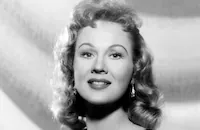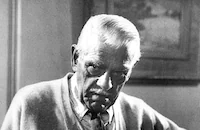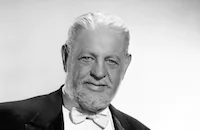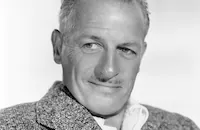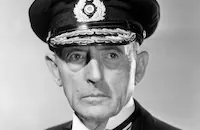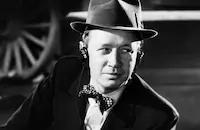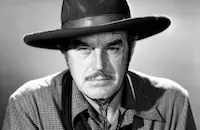There was never any doubt of Kaye's talent, but once Goldwyn got him to Hollywood for a screen test, he saw the challenges he faced. Kaye -- with his dark hair, wild eyes, and pronounced nose did not photograph well. Frances Goldwyn later recalled (in A. Scott Berg's biography, Goldwyn), "In that first screen test, Danny's face was all angles and his nose so long and thin it almost was like Pinocchio's. More tests were made. Then more. In each a new make-up was tried and different lighting. And none was good." Then Goldwyn had a brainstorm - dye Kaye's hair blonde. The hair color change did the trick, improving and complimenting his screen image considerably.
As a result, Kaye went on to become a huge star for Goldwyn in the years immediately following WWII and one of his most highly successful films was The Secret Life of Walter Mitty (1947). Yet, despite its box-office success, it never really satisfied its original author. James Thurber even offered Goldwyn $10,000 to NOT film his classic short story. The movie version, unlike Thurber's original story, focuses on a day dreaming bachelor accountant, who's being browbeaten by a domineering mother. Thurber felt the screen rendition became too melodramatic and was eventually brought in briefly to work with screenwriter Ken Englund on creating some additional sequences. In the biography, Nobody's Fool: The Lives of Danny Kaye by Martin Gottfried, Thurber later recalled, "Next to our new dream scenes, the greatest worry of Mr. Englund and myself was the possibility that this movie might be spoiled by one or more of Mr. Kaye's and Miss Fine's famous, but to me deplorable, scat or git-gat-giddle songs."
For her part, Kaye's wife and collaborator, Sylvia Fine, felt that Thurber's numerous dream sequences, particularly one involving a courtroom case and a firing squad, adversely affected the story's momentum and clashed with the musical numbers she had written for her husband. In a letter to Life magazine, Thurber later wrote, "Almost everything I had written, suggested, and fought for was dropped." Goldwyn would later question Fine's judgment in a famous incident that was reported in Berg's biography of Goldwyn. For a production meeting on The Secret Life of Walter Mitty, Fine didn't show up, prompting Goldwyn to ask, "Where's Sylvia?" "She'll be here a little late," Kaye explained. "In the mornings she goes to the psychiatrist." Goldwyn turned red and exploded, "Anybody who goes to a psychiatrist - should have his head examined!"
In the end, Kaye and Fine had their way with Walter Mitty but audiences and critics alike responded positively to the film. Viewers clearly enjoyed Mitty's fantasies of being a daring sea captain, a Western gunslinger, a Mississippi riverboat gambler, a brilliant surgeon, and a dashing pilot. At one point, Mitty even imagines himself as a fashion designer, "Anatole of Paris," and performs one of his most famous sing-song numbers. With the introduction of the luscious blonde Rosalind, played by Virginia Mayo (Ingrid Bergman had been considered for the part at one point), Walter soon finds himself caught up in a real-life conspiracy very much like the predicaments he encounters in his daydreams.
Producer: Samuel Goldwyn
Director: Norman Z. McLeod
Screenplay: Ken Englund, Everett Freeman, Philip Rapp, based on a story by James Thurber
Cinematography: Lee Garmes
Film Editing: Monica Collingwood
Art Direction: Perry Ferguson, George Jenkins
Music: Sylvia Fine, David Raksin
Cast: Danny Kaye (Walter Mitty), Virginia Mayo (Rosalind van Hoorn), Boris Karloff (Dr. Hugo Hollingshead), Fay Bainter (Mrs. Eunice Mitty), Ann Rutherford (Gertrude Griswold), Thurston Hall (Bruce Pierce).
C-111m. Closed captioning.
by E. Lacey Rice






